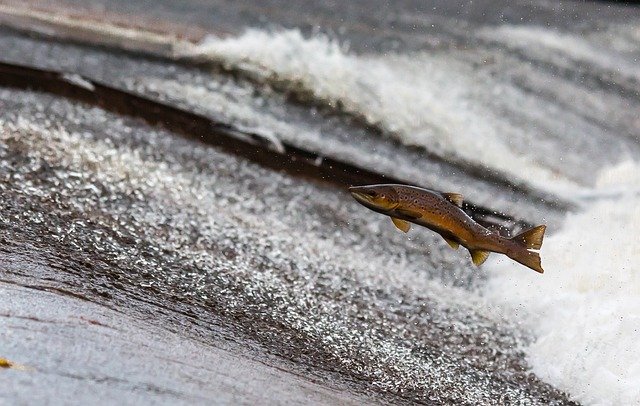Aquatic Acrobats: The Surprising World of Jumping Fish
From the placid surface of a lake to the tumultuous waves of the ocean, fish are known for their graceful swimming abilities. But did you know that some fish species have developed the remarkable skill of leaping out of water? This fascinating behavior, known as fish jumping, is not just a spectacle for human observers but serves various crucial purposes in the lives of these aquatic acrobats. Let's dive into the captivating world of jumping fish and explore the science, species, and significance behind this incredible phenomenon.

Jumping for Survival
For many fish species, jumping is a matter of life and death. Predator evasion is one of the primary reasons fish take to the air. When pursued by larger fish or marine mammals, species like flying fish can leap out of the water and glide for considerable distances, sometimes up to 50 meters. This airborne escape route often provides just enough time to evade capture and return to the safety of deeper waters.
Overcoming Obstacles
In river systems, fish jumping serves a crucial role in migration. Species like salmon are famous for their ability to leap up waterfalls and rapids as they journey upstream to spawn. These impressive jumps can reach heights of up to 3.65 meters, allowing salmon to navigate natural and man-made barriers. This behavior is essential for the species’ reproductive cycle and has evolved over millions of years.
Feeding Frenzy from Above
Some fish species have turned jumping into a hunting strategy. The archerfish, native to Southeast Asia, has perfected the art of aerial hunting. By shooting jets of water from its mouth, it can knock insects off overhanging vegetation, causing them to fall into the water where they become easy prey. This unique feeding method demonstrates how jumping behavior can extend beyond the water’s surface to interact with the terrestrial environment.
The Social Aspect of Aerial Displays
Jumping isn’t always about survival or feeding; for some fish, it’s a form of communication. During mating seasons, certain species engage in spectacular leaping displays to attract mates or establish dominance. The Atlantic sailfish, for instance, performs elaborate aerial acrobatics, leaping and twisting in the air. These displays not only showcase the fish’s strength and vitality but also play a role in social interactions within the school.
Human Impact and Conservation Concerns
As fascinating as fish jumping behavior is, it’s not without its challenges in the modern world. Man-made structures like dams and culverts can impede the natural migration patterns of jumping fish, particularly in river systems. Conservation efforts have led to the development of fish ladders and other passage systems to help mitigate these obstacles. However, the effectiveness of these solutions varies, and more research is needed to ensure the preservation of jumping fish species and their habitats.
The Economic Ripple Effect
The phenomenon of jumping fish has created unique economic opportunities in various parts of the world. Eco-tourism centered around observing spectacular fish jumps, such as the annual salmon run in Alaska, can generate significant revenue for local communities. Additionally, the design and construction of fish passage systems have become a specialized industry, with engineers and biologists collaborating to create effective solutions for both fish and human infrastructure needs.
Jumping into the Future: Research and Technology
As our understanding of fish jumping behavior grows, so does the potential for innovative applications. Researchers are studying the biomechanics of jumping fish to inspire new designs in robotics and aquatic vehicles. For instance, the development of unmanned underwater vehicles that can transition from water to air could revolutionize marine exploration and search-and-rescue operations. The estimated market value for such bio-inspired technologies is projected to reach several billion dollars within the next decade.
In conclusion, the world of jumping fish offers a captivating glimpse into the adaptability and ingenuity of aquatic life. From survival strategies to social interactions, these aerial feats serve multiple purposes in the lives of various fish species. As we continue to study and appreciate these remarkable behaviors, we not only gain insights into the complexity of aquatic ecosystems but also find inspiration for technological advancements. The next time you see a fish break the water’s surface in a graceful arc, remember that you’re witnessing the result of millions of years of evolution – a true masterpiece of nature’s design.





